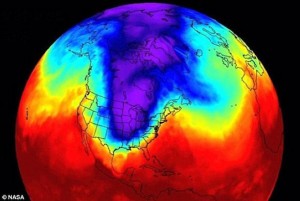Global Warming is a reality and it’s almost too late to take it seriously
By Laurie David, Founder of the Stop Global Warming Virtual March, StopGlobalWarming.org, February 24, 2014
Don’t let the cold in parts of the US this January fool you. Globally, January 2014 ranked as the fourth warmest since 1880, according to NOAA data.
Despite the cold temperatures on the East coast and in the Midwest, the West experienced much warmer and drier weather than usual. Alaska was nearly 15 degrees warmer than normal, and the conditions in California are leading to one of the worst droughts ever.
Many areas worldwide, including most of South America, Africa and Australia, had their warmest January in history. For the record, the three warmest Januaries in the last 134 years are all recent — 2002, 2003 and 2007.
The point of course is that global warming is alive and well, and a few local spots of cold weather do not disprove the overall global climate trend. For more on the NOAA’s recent report, visit the National Climatic Data Center.
Snow in a Warming World?
The Winter Olympics have ended, earning the medal for the warmest of the modern era, with an average temperature of nearly 49 degrees.
A number of days in Sochi hit 60 degrees or more, including a high of 69 degrees on Feb 15.
Notably, every Winter Olympics in the last 20 years has seen a warmer climate than the preceding one.
It is not just the Winter Olympics that must now rely on artificial snow-making. According to a recent New York Times article (“The End of Snow?”), nearly 90% of American ski resorts rely on artificial snow:
“The ski season in parts of British Columbia is four to five weeks shorter than it was 50 years ago, and in eastern Canada, the season is predicted to drop to less than two months by midcentury. At Lake Tahoe, spring now arrives two and a half weeks earlier, and some computer models predict that the Pacific Northwest will receive 40 to 70 percent less snow by 2050. … Between 1999 and 2010, low snowfall years cost the industry $1 billion and up to 27,000 jobs.”
For details on the impact to winter sports, read the NRDC’s 2012 report “Climate Impacts on the Winter Tourism Economy in the United States” (PDF).

